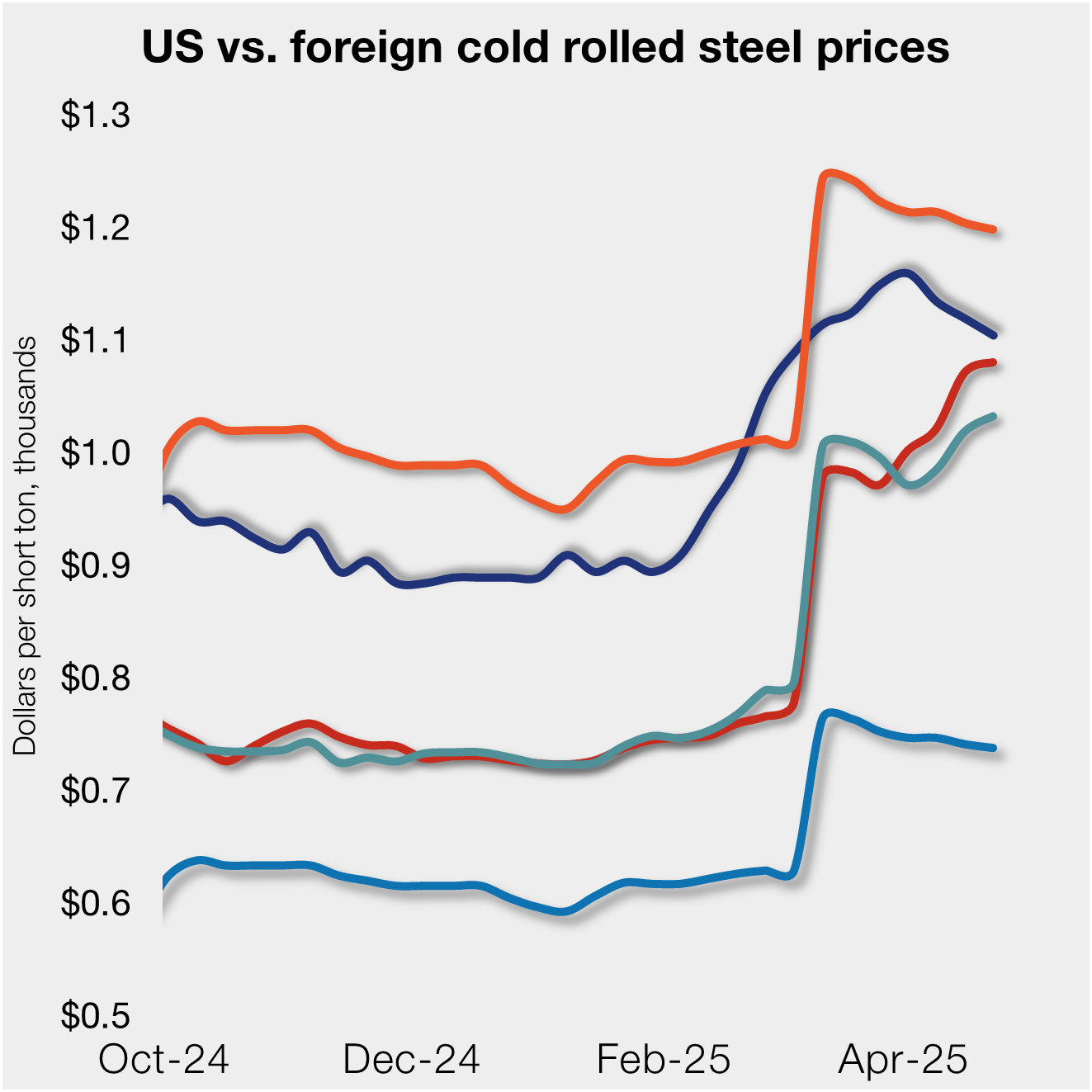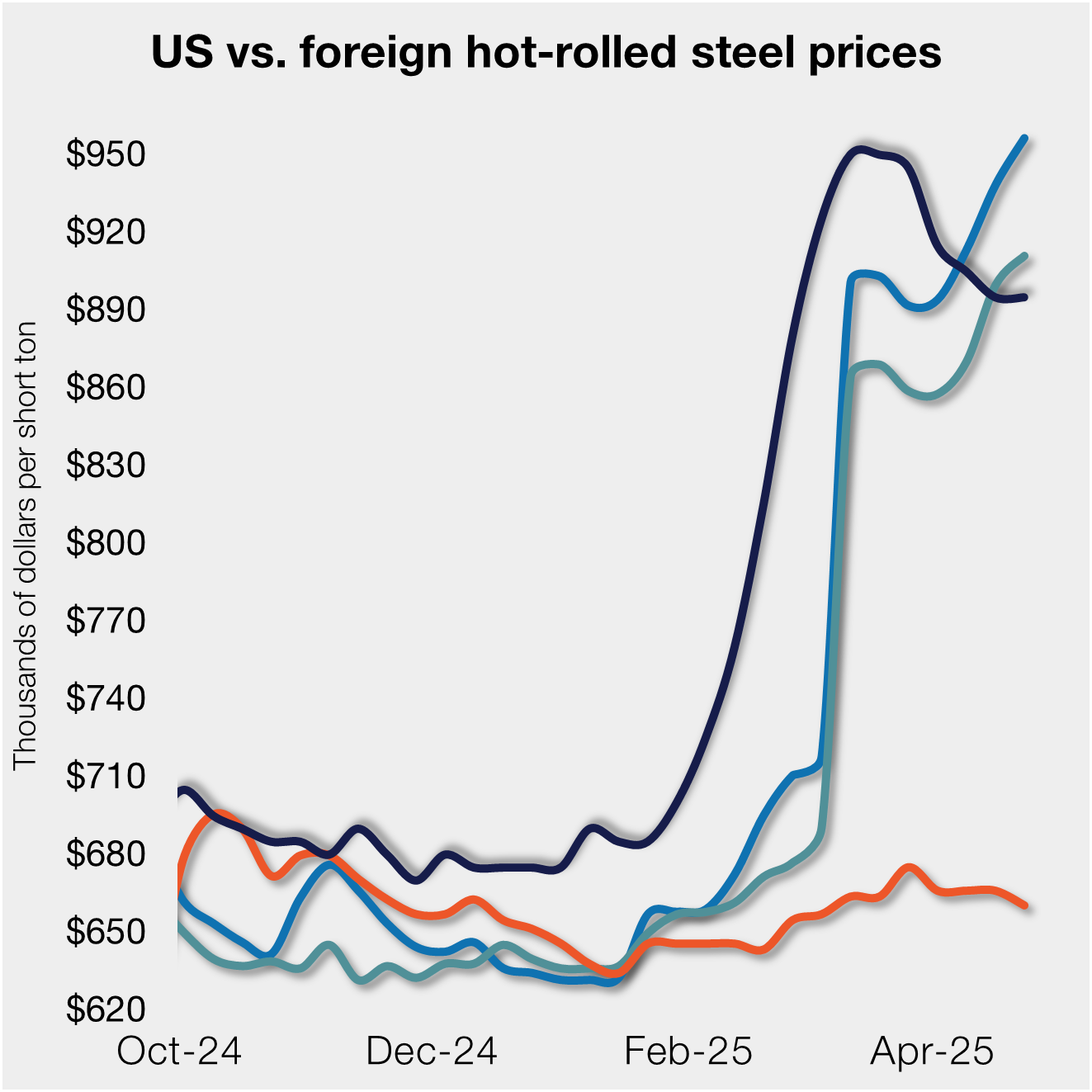Steel Products
High Construction Demand, Low Worker Availability
Written by Sandy Williams
July 23, 2017
A shortage of qualified job seekers resulted in only 25 states adding construction jobs between May and June despite strong industry demand, says the Associated General Contractors of America. Forty-one states added construction jobs between June 2016 and June 2017.
“Contractors in most of the country say they have plenty of projects booked and would like to hire more workers if they could find them, so it is likely that some states with monthly employment declines have a shortage of workers available to hire rather than a slowdown in work,” said Ken Simonson, chief economist for the association. “Given the low unemployment rate in most states, other industries are competing hard for workers, making it difficult for contractors to find new construction workers, let alone experienced ones.”
More training opportunities are needed to attract students and young adults to the construction industry, says AGC. The association urges Washington to expand investments in secondary career and technical education, making it easier to establish apprenticeship training programs in all market types and allowing for more charter schools and career academies that focus on construction skills.
“The need for more craft workers in fields like construction is growing every month,” Stephen E. Sandherr, chief executive officer for the association, said. “There is a correspondingly urgent need to put in place measures that can expand training opportunities for people considering careers in construction.”
{loadposition reserved_message}
California added the most construction jobs (46,500 jobs, 6.0 percent) during the past year. Other states adding a high number of new construction jobs for the past 12 months include Florida (32,400 jobs, 6.9 percent), Louisiana (15,600 jobs, 11.1 percent), Texas (14,400 jobs, 2.1 percent) and Oregon (11,200 jobs, 12.5 percent). Rhode Island added the highest percentage of new construction jobs during the past year (13.4 percent, 2,400 jobs), followed by Nevada (12.6 percent, 9,500 jobs), Oregon and New Hampshire (11.1 percent, 2,800 jobs).
Eight states and the District of Columbia shed construction jobs between June 2016 and June 2017. The District lost the highest percentage for the year (-5.7 percent, -900 jobs), followed by Alaska (-4.9 percent, -800 jobs), South Dakota (-3.7 percent, -900 jobs), Mississippi (-2.6 percent,-1,400 jobs) and Missouri (-2.6 percent, (-3,100 jobs). Missouri lost the largest number of construction jobs), followed by Illinois (-1,700 jobs, -0.8 percent), Mississippi, D.C., and South Dakota. Construction employment was unchanged over the year in Iowa.
Between May and June, California had the largest numerical increases (8,100 jobs, 1.0 percent), followed by Florida (5,100 jobs, 1.0 percent), New Jersey (4,200 jobs, 2.7 percent), Louisiana (4,000 jobs, 2.6 percent), Nevada (2,100 jobs, 2.5 percent) and Missouri (2,100 jobs, 1.8 percent). New Jersey had the largest percent gain for the month, followed by Louisiana, Nevada, West Virginia (2.3 percent, 700 jobs) and New Hampshire.
Twenty-one states lost construction jobs between May and June. Georgia had the largest numerical loss (-4,000 jobs, -2.2 percent), followed by Colorado (-3,500 jobs, -2.2 percent), Massachusetts (-2,800 jobs, -1.9 percent), Michigan (-2,800 jobs, -1.7 percent) and Wisconsin (-2,700 jobs, -2.4 percent). Wisconsin lost the highest percentage of construction jobs for the month, followed by Georgia and Colorado, Massachusetts, Michigan and Wyoming (-1.4 percent, -300 jobs). Construction employment was unchanged for the month in Arkansas, Maine, New Mexico and North Dakota.

Sandy Williams
Read more from Sandy WilliamsLatest in Steel Products

US rig count up, Canada declines
Oil and gas drilling activity was mixed this week, according to Baker Hughes. US rig counts expanded for a second straight week, while Canadian activity continued its seasonal slowdown of eight consecutive weeks.

US, offshore CRC prices continue to diverge
US cold-rolled (CR) coil prices declined again this week, slipping for a third straight week. Most offshore markets did the opposite, moving higher this week.

S232 lifts EU HR price over US, Asian HR still well behind
Domestic hot-rolled coil prices were flat this week after dropping for four straight weeks. Most offshore markets bucked the trend and gained ground.

SMU Steel Demand Index dips into contraction
SMU’s Steel Demand Index has moved into contraction, according to late April indicators. The slowdown comes in response to growing tariff uncertainty after the index reached a four-year high in late February.

Nucor selects Fives Group for new galv line at CSI
Nucor Corp. has tapped Fives Group as its partner in designing and manufacturing the new continuous galvanizing line being added at its California Steel Industries (CSI) joint venture in Fontana, Calif.
